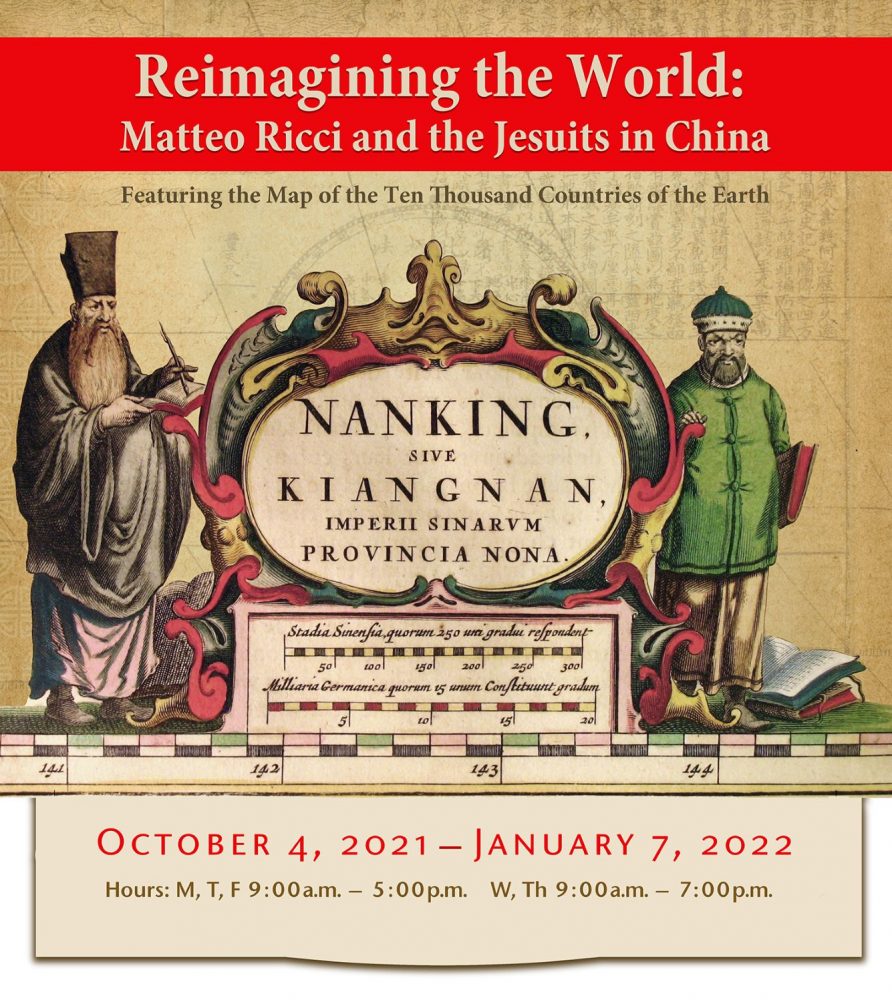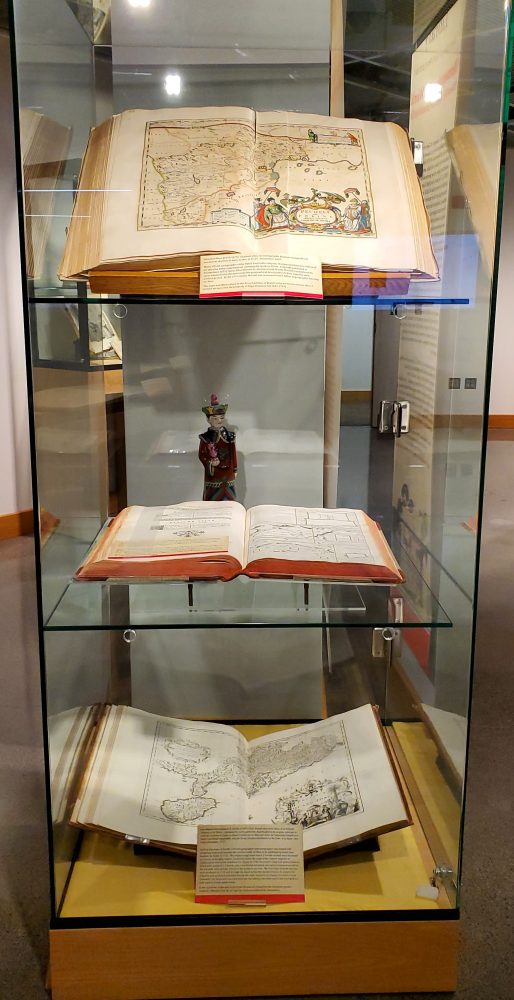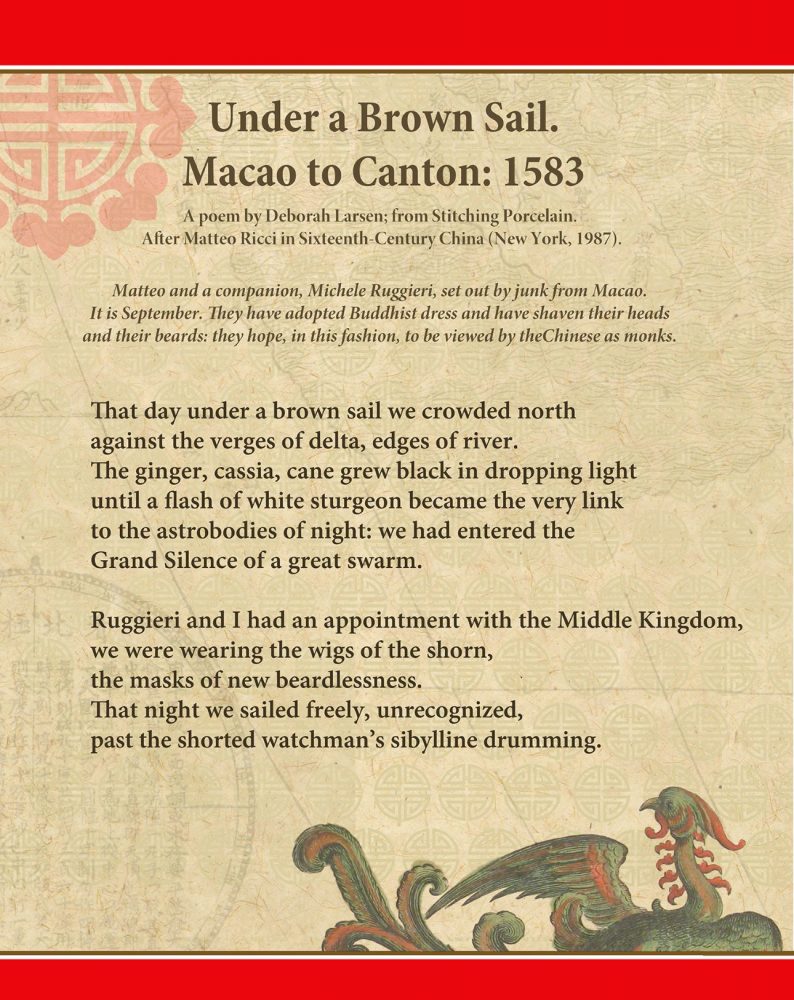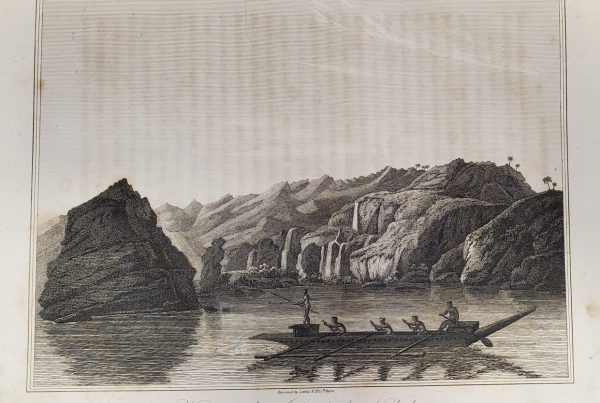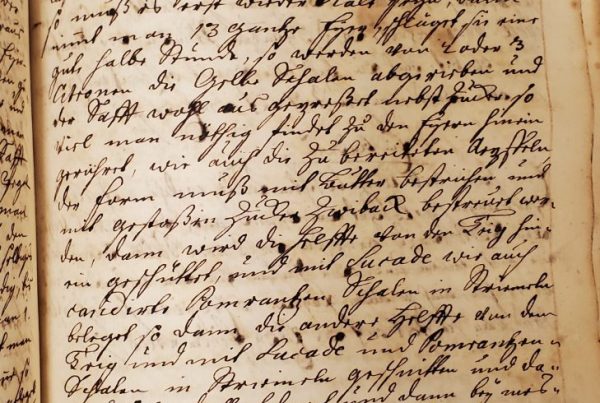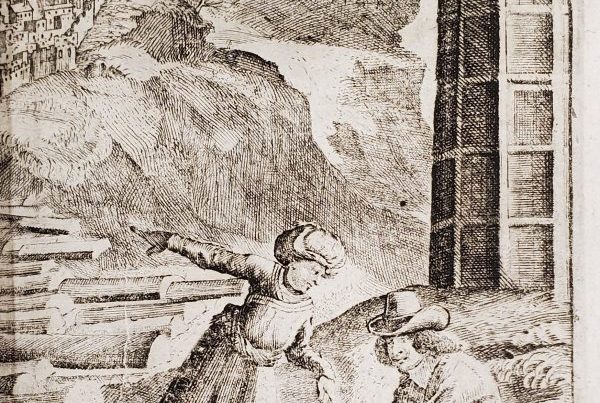By Anne Good, Assistant Curator
Two exhibits are currently on display at the James Ford Bell Library, housed in the Elmer L. Andersen Library on the West Bank of the University of Minnesota Twin Cities Campus. The main gallery exhibit, “Reimagining the World: Matteo Ricci and the Jesuits in China,” honors the return of Kunyu wanguo quanta [Map of the Ten Thousand Countries of the Earth] to its home in the Bell Library. The Bell Room exhibit, “Hidden in Plain Sight: Rediscovering ‘Lost Voices’ in the Bell Collection,” introduces our plans for the types of exhibits that will be staged in the re-imagined Bell Room in the coming years.
Both exhibits are open to the public, and we welcome you to visit us. Masks are required inside University of Minnesota buildings, and there is plenty of room to remain socially-distanced, so we are confident that this is currently the safest fascinating experience in the Twin Cities!
The Map of the Ten Thousand Countries of the Earth, also known simply as “the Ricci Map,” has been visiting the Library of Congress for the past ten years, and we are thrilled at its return. It was purchased by the James Ford Bell Trust for the benefit of the James Ford Bell Library in 2009 and was formally gifted to the University for the Bell Library’s collection in 2020. The University Libraries extends its thanks to the James Ford Bell trustees, Ford W. Bell and Amy Bell, for this gift, made in memory of former trustee Diane Brutout Neimann, who was instrumental in its acquisition. The Bell’s map is one of only six known copies, and the only copy in North America.
Preparation for the current exhibit began months ago as the Bell’s gallery space in the Wallin Center was extensively remodeled. Wall space was created to house the map’s custom-built case, created by the German firm, Glasbau Hahn. The installation itself was quite exciting!
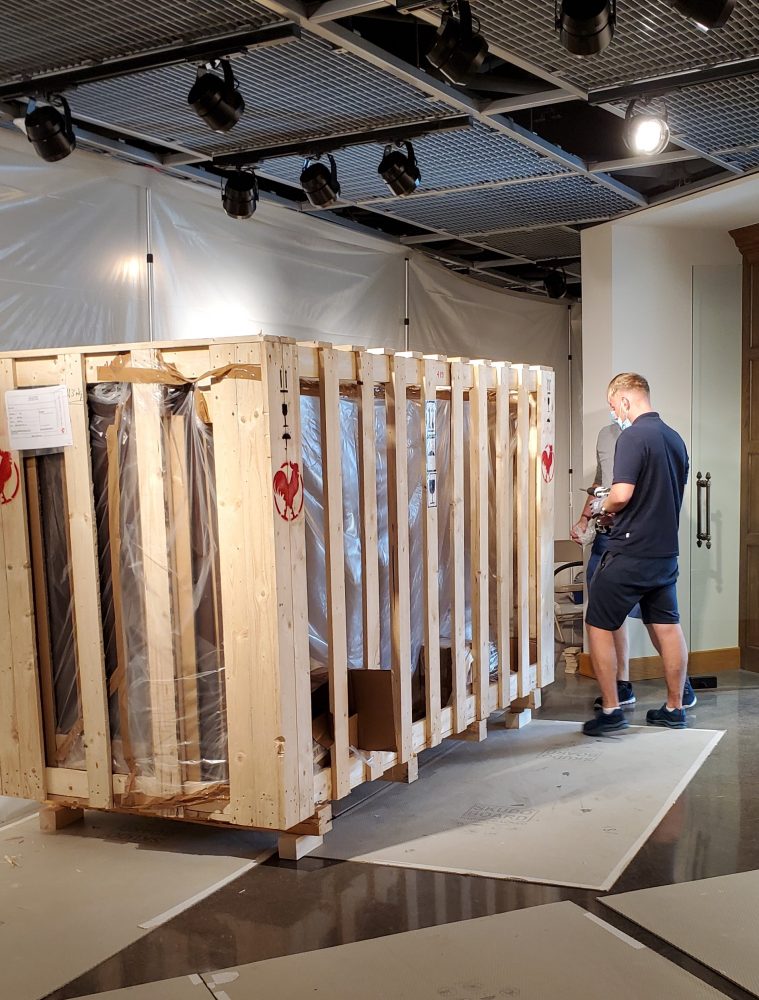
The custom-made case for the “Map of the Ten Thousand Countries of the Earth” arrived in a massive wooden crate, shipped from Glasbau Hahn, a 5th-generation glazier firm located in Frankfurt am Main, Germany.
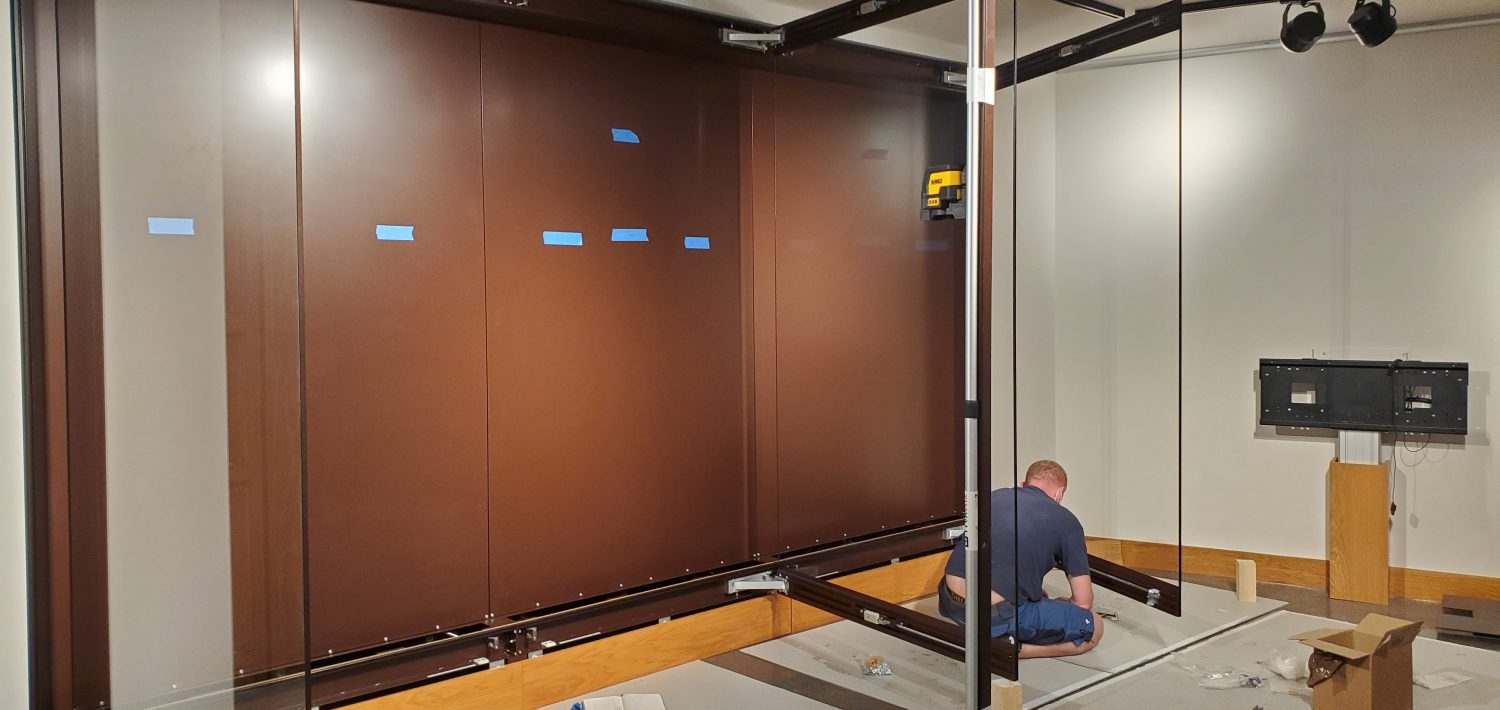
The precision installation was accomplished over the course of two weeks by two expert craftsmen who accompanied the case from Germany.
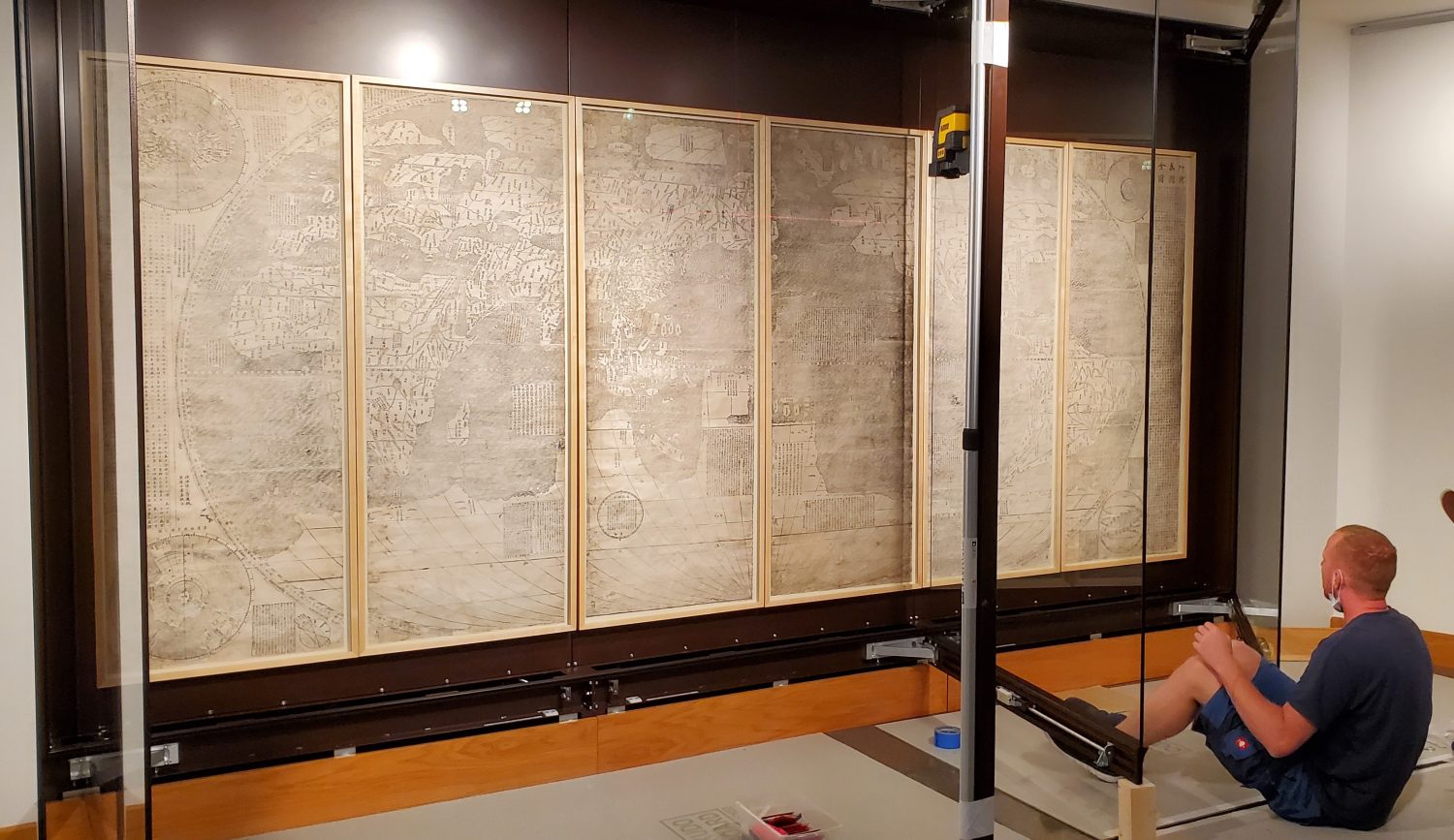
There was a collective sigh of relief when the map panels clicked perfectly into place in the new case.
The accompanying exhibit, “Reimagining the World: Matteo Ricci and the Jesuits in China,” contextualizes the map. The Map of the Ten Thousand Countries of the Earth, was created in 1602 at the court of the Ming emperor under the direction of Jesuit missionary Matteo Ricci, with the collaboration of Li Zhizao, a Chinese mathematician, astronomer, and geographer. The exhibit showcases items in the Bell’s collection relating to Jesuit activity in China between the 16th and 18th centuries.
Maps and atlases on display help visitors envision early modern ideas about the shape of the world, and the ways that information and speculation was conveyed visually. Books of particular beauty are the original atlas by Abraham Ortelius, Theatrum orbis terrarum (1570), which influenced the way that Ricci drafted Map of the Ten Thousand Countries of the Earth, and Joan Blaeu’s maps of China from Le Grand Atlas (1667), which were built on information learned from the Jesuit missionaries.
The Jesuits were keen observers of people and places all over the world. For the purpose of promoting their missionary activities, members of the order kept up a steady stream of letters to Europe. Much of this correspondence was published, usually in Latin first, and then translated into the major European languages. Jesuits therefore had an incredible influence on the way that China became known in the West.
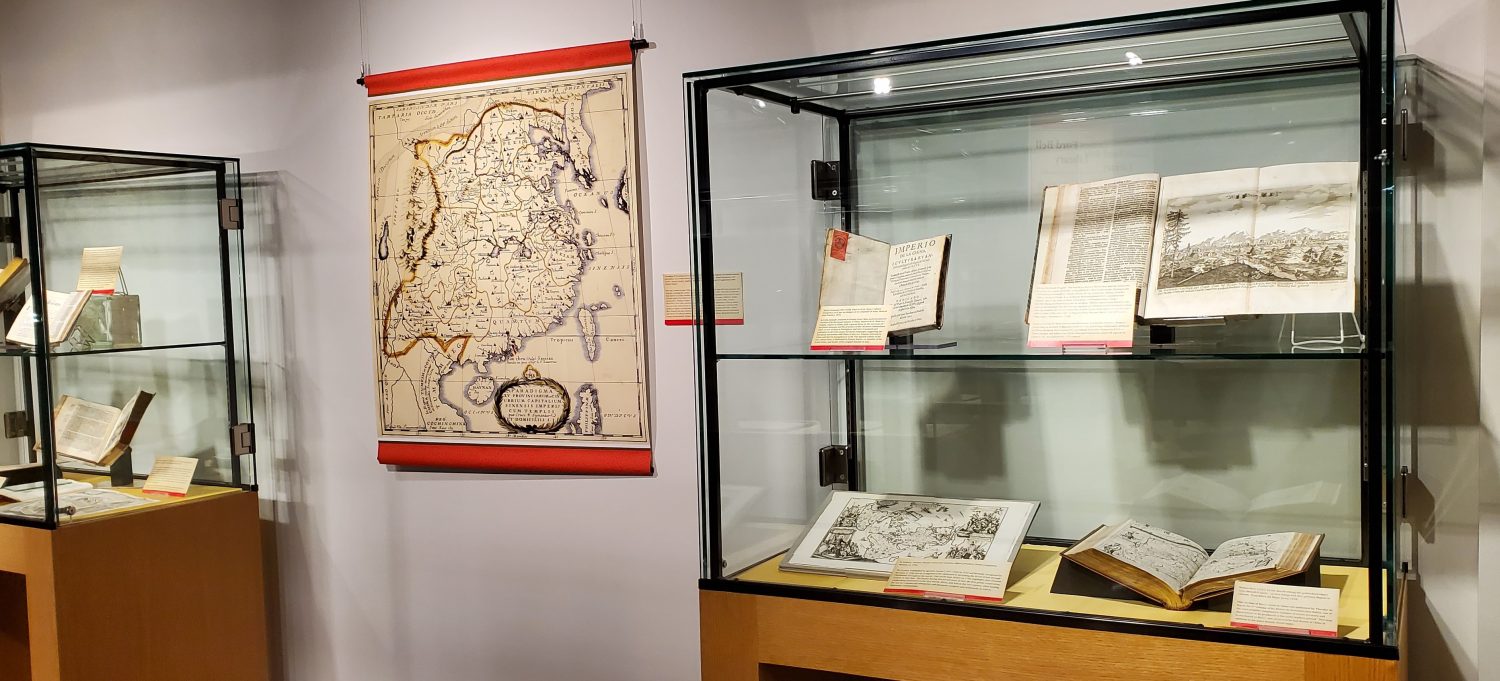
On display are books describing Chinese culture, music, food products, silk-weaving, and astronomy at the Ming court.
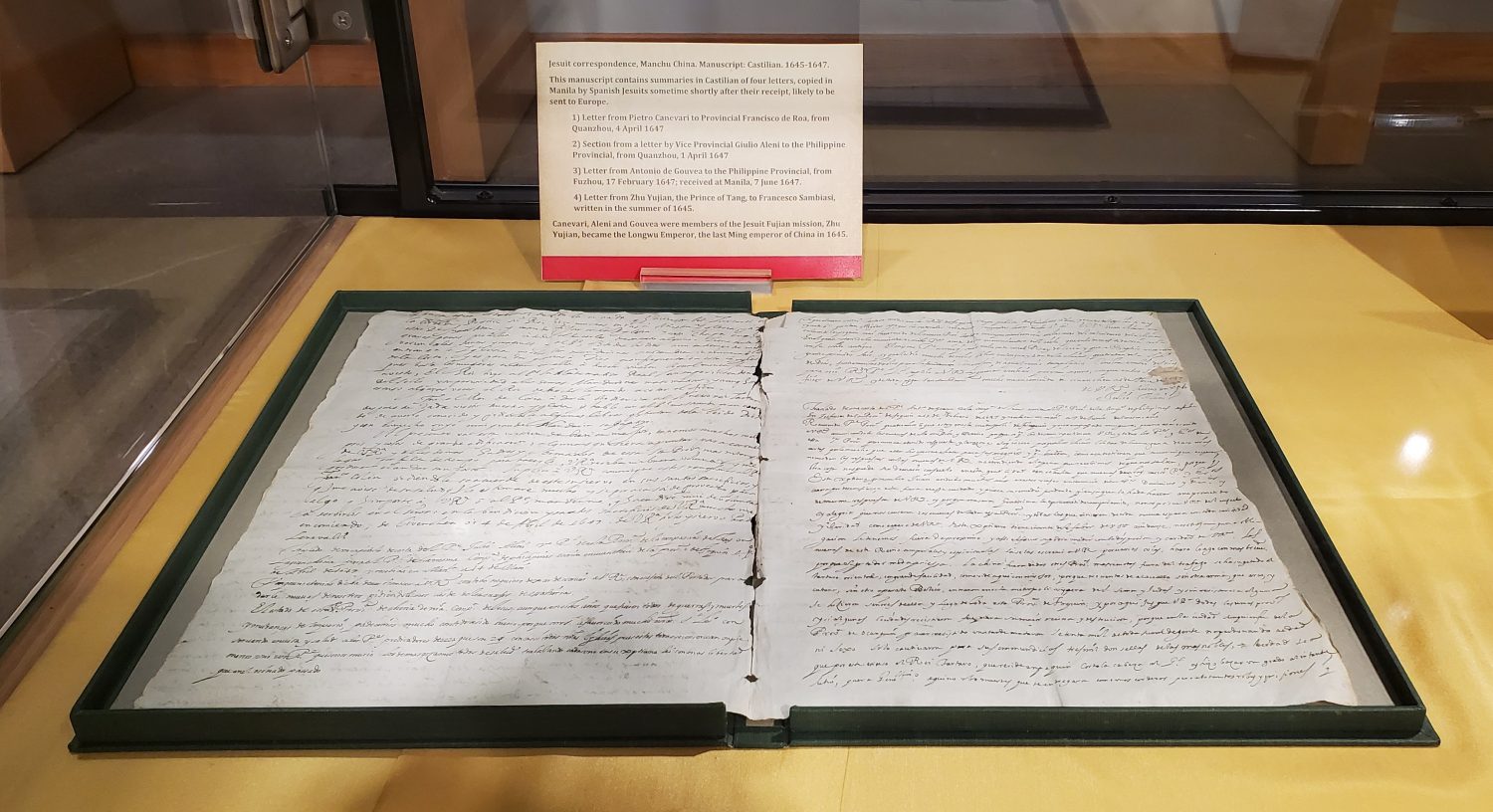
One of the manuscript letters in the Bell’s collection, written by a Jesuit missionary who lived in China in the early 18th century.
Photos of items in cases are no substitute for seeing the real things! If you are reading this post in the Twin Cities, do come and see the books, manuscripts, and maps in person.


